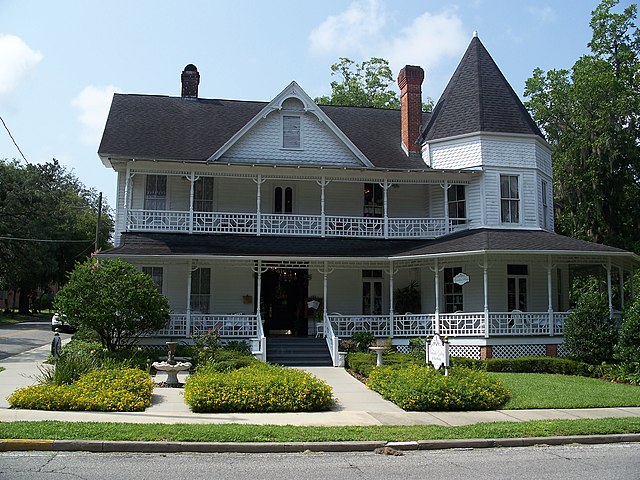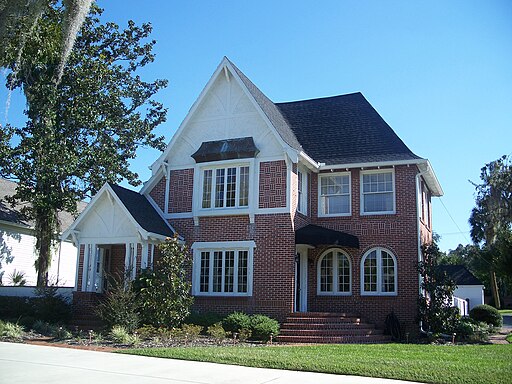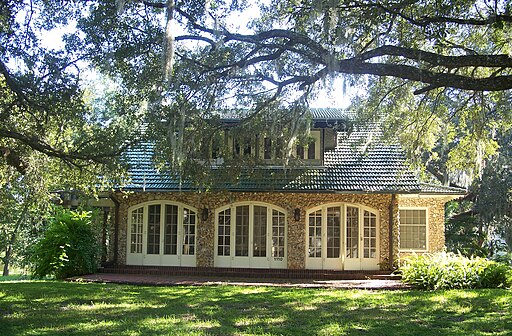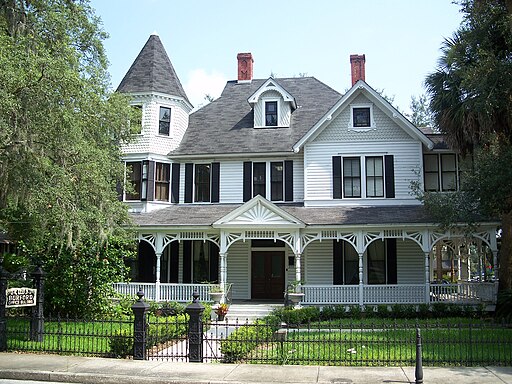
If you haven’t had a chance to do it yet, take a little time some sunny afternoon and stroll the tree-lined streets of Ocala’s Historic Districts. It’s worth an hour or two just for the quiet getaway from the bustle of downtown, but not only that, it’s truly amazing to see how many absolutely gorgeous old houses still stand like sentries on watch. They’re a tangible link to Ocala’s industrial period, with multiple architectural styles including Georgian, the Victorian Queen Anne Revival style, Colonial Revival, Craftsman Bungalow, and Carpenter Gothic, among others. The variety is pretty astounding, reflecting the changing tastes and styles over nearly two centuries of US history.
Most of us have looked at these beautiful historic homes and thought of owning or living in one – some of us more seriously than others. But it’s hard to resist; imagining for even just a few minutes living in a house where so many things must have happened and whose very existence is itself a testament to lives and events witnessed, experienced, and sometimes even recorded for later generations to learn. The lure is tantalizing and tempting, and for those with more than a passing interest, there are definite advantages to owning a historic home – but there are also some possible pitfalls.
The Dunn House
Ebyabe, CC BY-SA 3.0 <http://creativecommons.org/licenses/by-sa/3.0/>, via Wikimedia Commons
The Money Pit
Let’s get right into the less-than-appealing aspect of historic home ownership; that way we can talk about the problems right up front and head-on. These aren’t necessarily deterrents to purchasing a stately, 150-year old Second Empire brick house – but knowing what to prepare for might make things a little easier to manage.
1. Renovations and Maintenance
Depending on the maintenance done by the previous owners – and when that maintenance was done – you might have a little or a lot to do. Inevitably though, you’re going to have some work to do on the place. There could be water or foundation issues, roof repair, electrical upgrades, or termite damage to name a few things. Given that these homes are old, there are often structural and maintenance problems, and some properties will need major restoration. Home repair and renovation in general takes some careful financial planning; a historic home repair is likely to require specialized work. It will also probably involve good time management as well, so make sure you have enough of that, too – and a safe, comfortable place for living while you do it.
2. Rules and Requirements
Because a historic home is – well, historic, there are going to be some restrictions on the things you can do with it. Adding an extension to a modern home is fairly simple, such as building a deck or porch. Conversely, adding almost anything to a historic property is going to be met with rigorous questioning and a lot of red tape. Even changing the paint color of the home is bound by local and city laws; if the color isn’t correct for the period, you’re going to have to pick from the ones approved by either the Historic Ocala Preservation Society (HOPS) – or the city office. They can help explain what the rules and restrictions are and give you an understanding of the Do’s and Don’ts.
3. Costs and Budgeting
Put bluntly, your home insurance is going to be more expensive; there’s no way around it. Depending on the size of the home, its age, and architectural elements that aren’t easy to replace if damaged, the insurance can be extremely specific and exacting. Because of that, ‘regular’ providers don’t offer the kind of coverage you’ll need for such a unique property, so you may need to find a more specialized one – such as historic property insurance, and that’s going to cost more. Also, the older your home, the more chances of ongoing and specialized repairs will be necessary, so that can affect your rate. Lastly, if the home is in a historic district, the property value is almost always higher than usual, which means higher property taxes. As we said before – make sure to do some solid financial review and planning before taking the plunge, so that you’re ready if these issues come up.
4. Specialists and Contractors
You’ve probably worked with a contractor before, but if you’re buying a historic home, you’ll need one who has not only the skill and expertise to do the work and repairs – but also an understanding of the history and the architecture; what needs to be replaced or removed, what’s irreplaceable, what’s original and what’s bespoke, and what restrictions they must obey.
It’s specialized work; contractors must follow the guidelines required by the city and historic districts to the letter. Not all of them can or want to do it, because it’s demanding and exacting. The ones who do, however, are usually very experienced and knowledgeable, and many of them exclusively focus on historic renovations. Your best option is to contact City management and HOPS, and they can point you towards reliable contractors who have a proven track record of success and reliability.
The Taylor ‘Rock’ House
Ebyabe, CC BY-SA 3.0 <http://creativecommons.org/licenses/by-sa/3.0/>, via Wikimedia Commons
Castles in the Sky
Now that we’ve knocked through the less-fun side of historic home ownership, let’s talk about the things that make it worthwhile and just plain cool.
1. Unique Architecture and Design
How many times have we heard the phrase “they don’t build them like that anymore”? Well, it’s true; they don’t. We’ve been talking in this blog about the architecture of various designs and periods; they all have distinctive names because there’s something about each of them that is unique to that era of architecture and design, or the style of the day that was all the rage. You just don’t see big, ornate marble fireplaces, crystal chandeliers or ornate stained glass windows as much in modern designs anymore – or the occasional dumbwaiter on a pulley system, and a sweeping, grand flying staircase in the main foyer.
There are fun things to discover in a historic home; you could spend years before noticing all of them. You’re living in a time capsule, where you’re privy to something only a few people have probably seen every day. And that’s pretty special.
2. Historic Conservation
History is literally in the walls and the foundation; families have lived and ended their lives within a historic home – sometimes whole generations one after the other. You never know what you might find; an old height chart from the 1800s that shows how fast and far the children grew, or an old letter and scrapbooks in the attic. There might be a furtive scratch on a closet wall echoing that they were here, or you might find an entire record about one of the inhabitants in the local newspaper archive. You’re not just protecting and preserving history – you become part of it, and you help keep it alive for the next person who takes the reins. It’s also part of the fabric and identity of the area where you live, adding its own piece to the patchwork of the town and the region’s legacy.
3. Financial Benefits
Yes, it can be expensive to renovate and maintain a historic property, but the good news is that you might also be able to access some financial benefits. Often, state and local tax breaks are available, federal grant programs, and there may also be lower interest loans you can apply for to help with restoration costs, which are generally not available for modern homes.
The Federal Historic Preservation Tax Incentives Program offers a 20% credit that is specifically for historic preservation/rehabilitation of properties that are on the National Register of Historic Places. It can also be used to produce income, if for instance you want to give tours or offer your home as a meeting space. Finally, if your home is in a Historic District – as we noted previously, your property value is high, but it’s also unlikely to drop.
4. Preserving History
The really great thing about owning a Victorian, Georgian, Baroque, or Colonial home that has weathered a century or two is that you’re not alone; there are resources and a community that’s willing to help. Particularly here in Ocala, we have HOPS, the City administrators, historians, archivists, architects, and artisans who provide a wealth of information and expertise for anyone who asks, and federal resources such as the National Park Service and the National Archives.

About HOPS
HOPS has also created educational programs to benefit Marion County youth, and their walking tours of the historic districts are a popular highlight for visitors and residents alike. There are currently 340 contributing structures in the Historic Districts of Ocala, many of which are open to visitors and are included in the tours.



